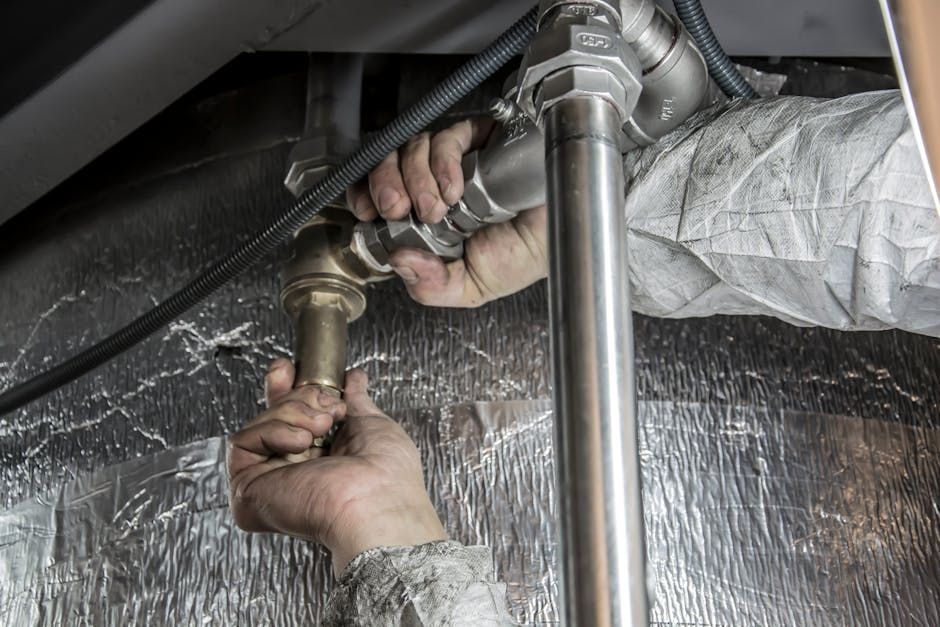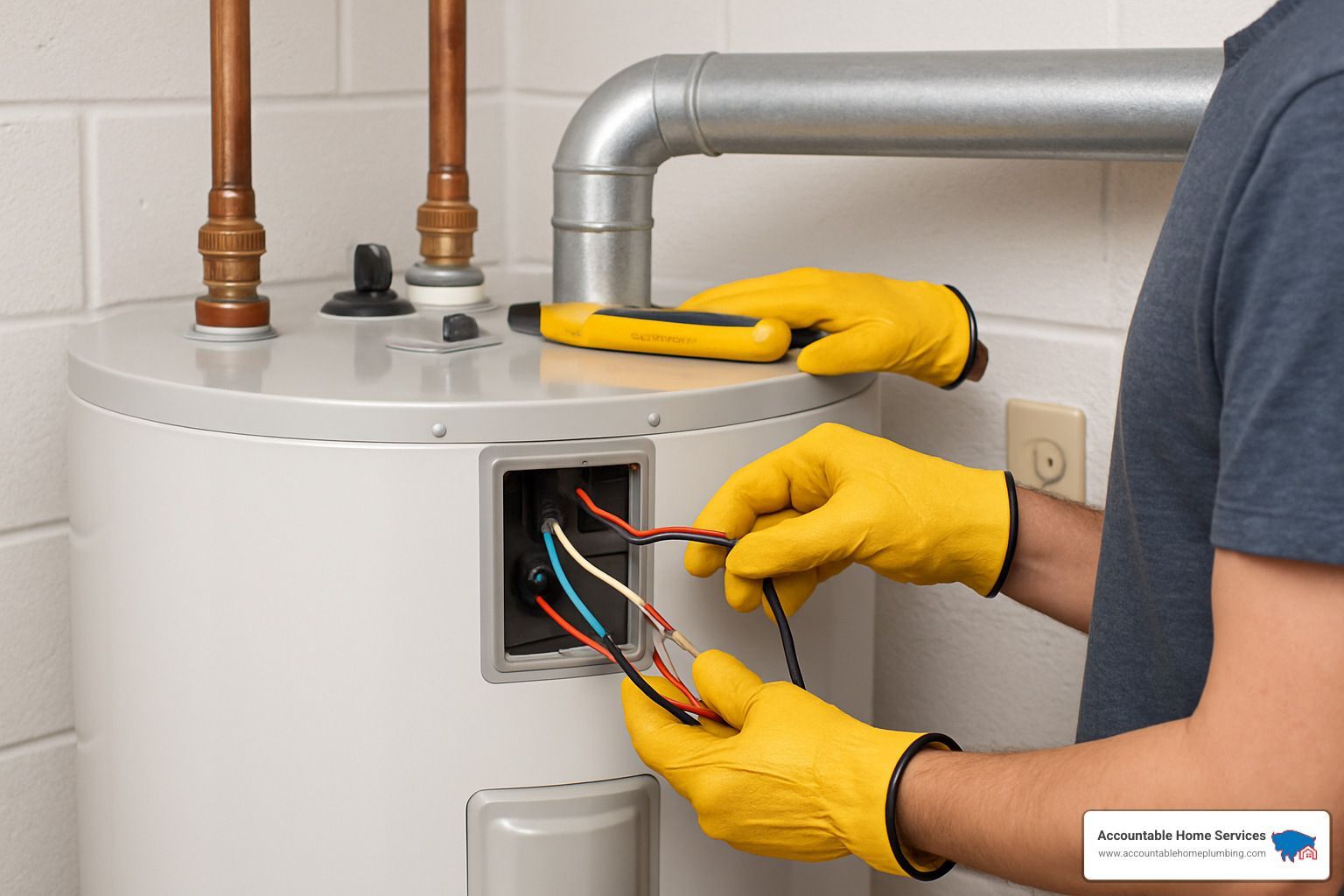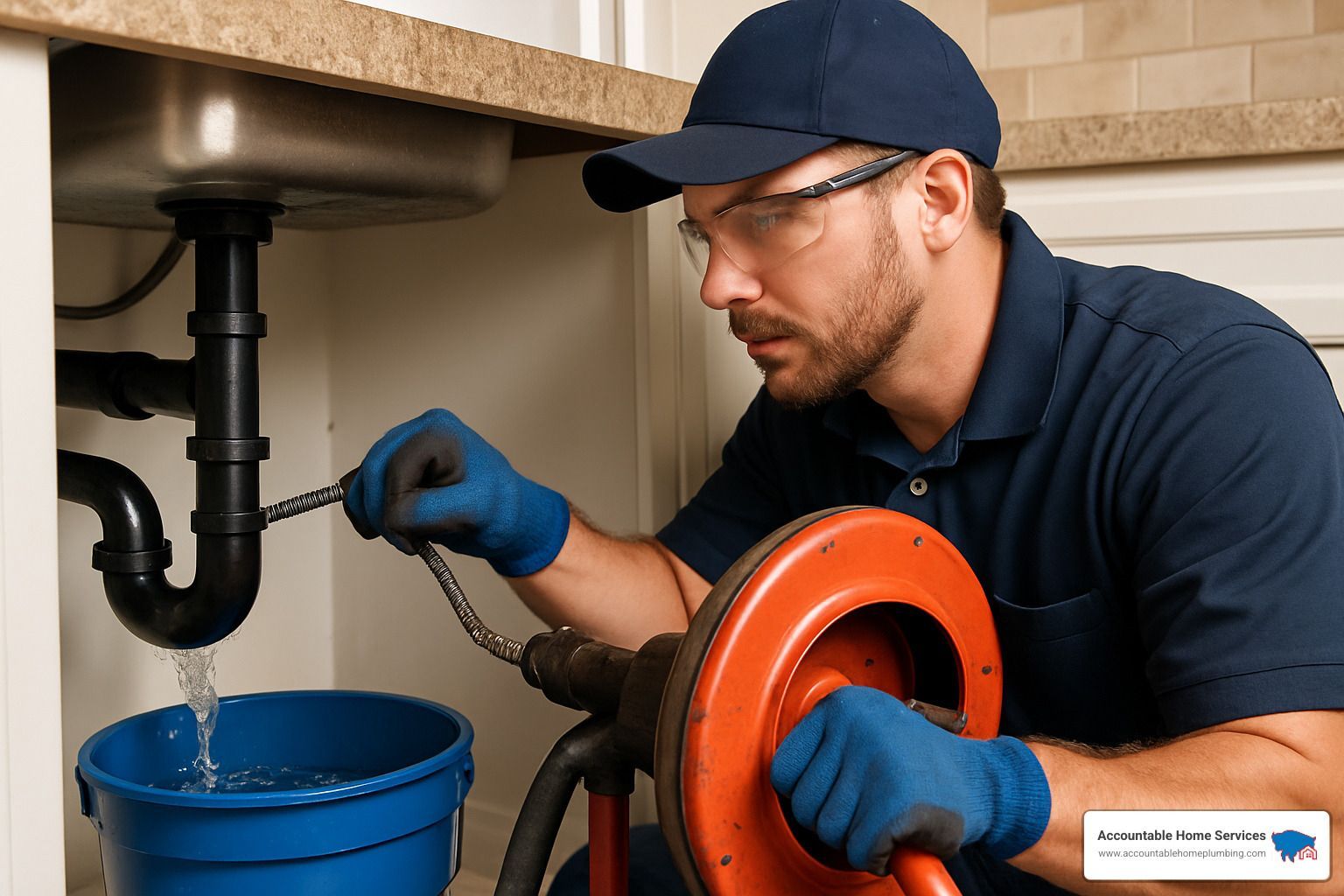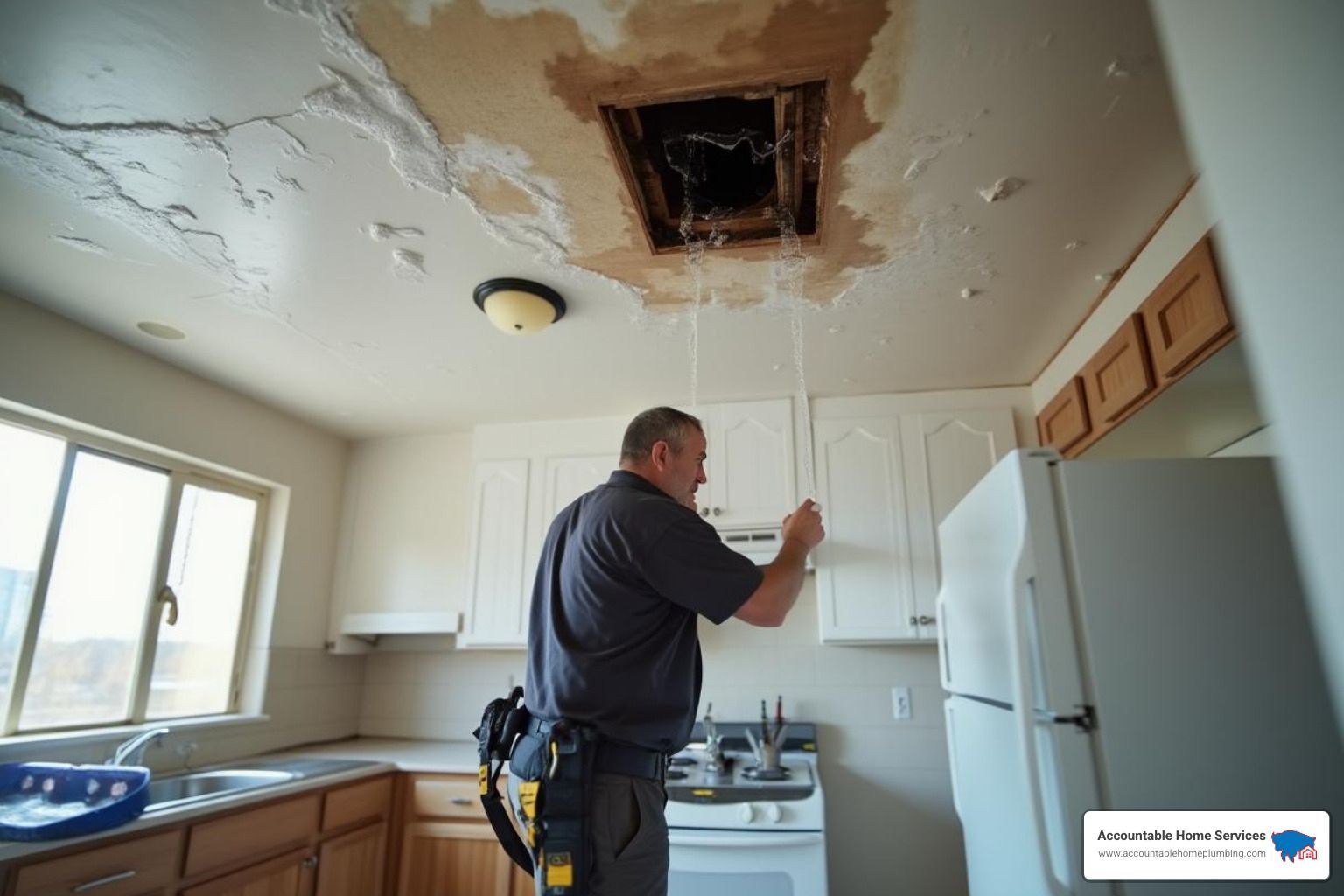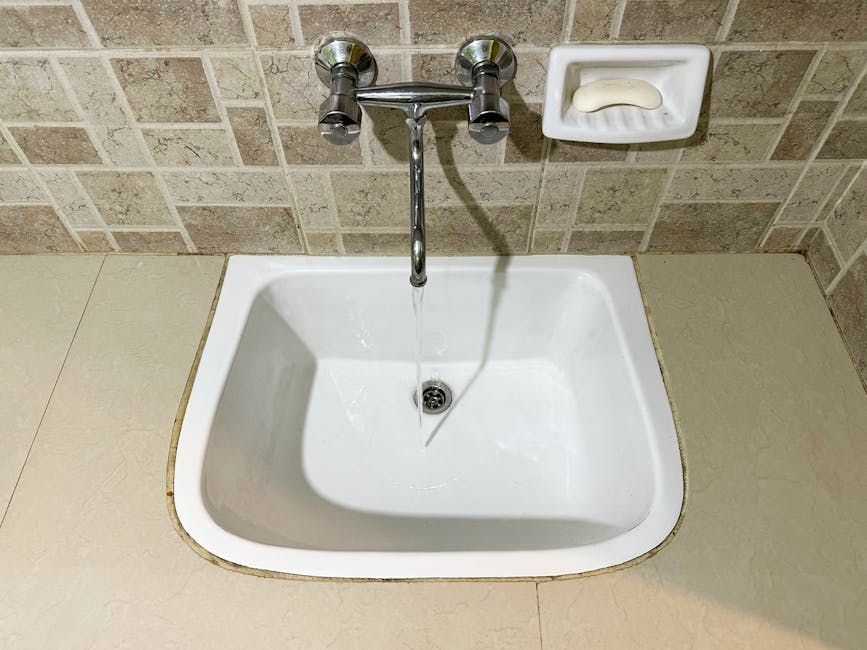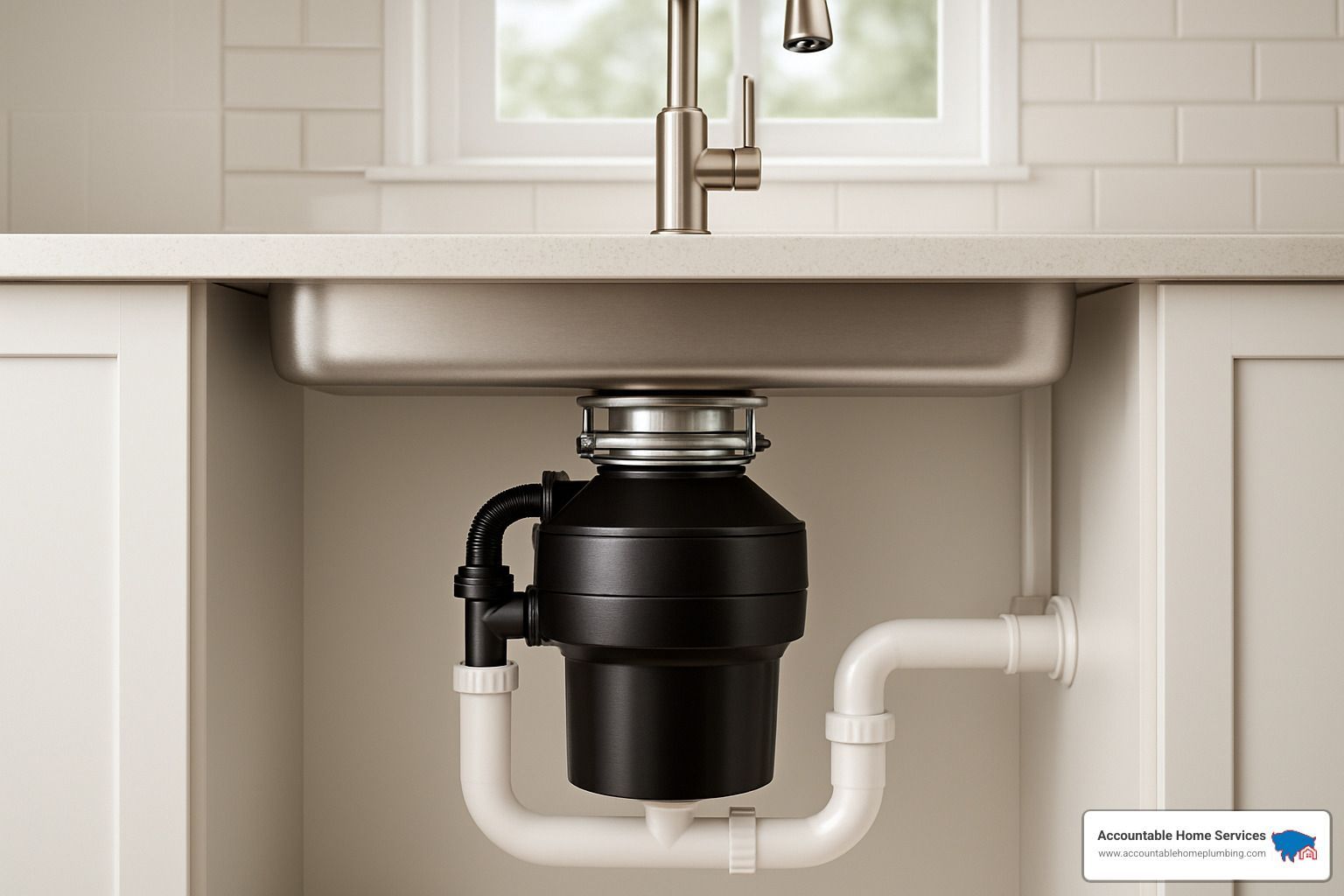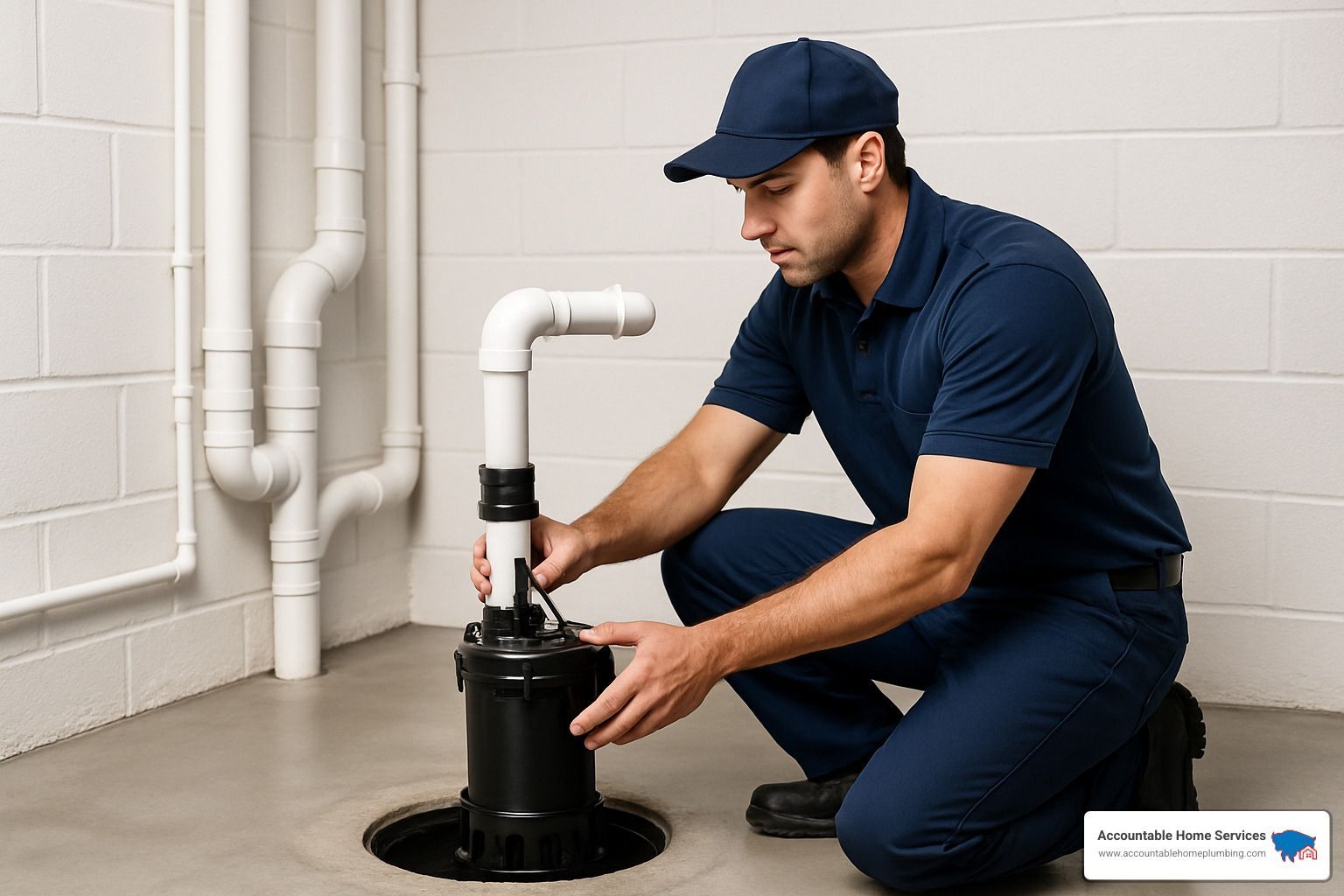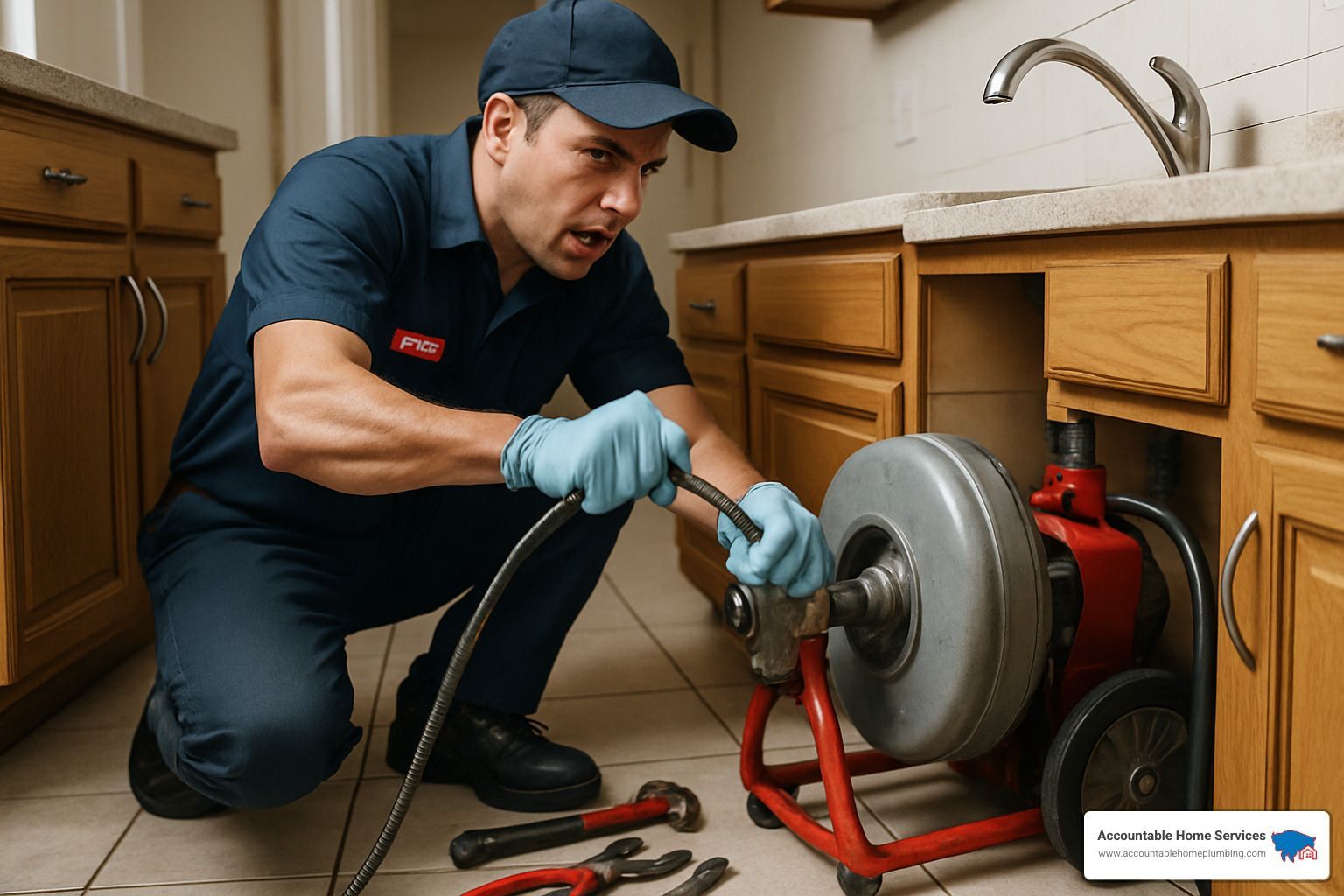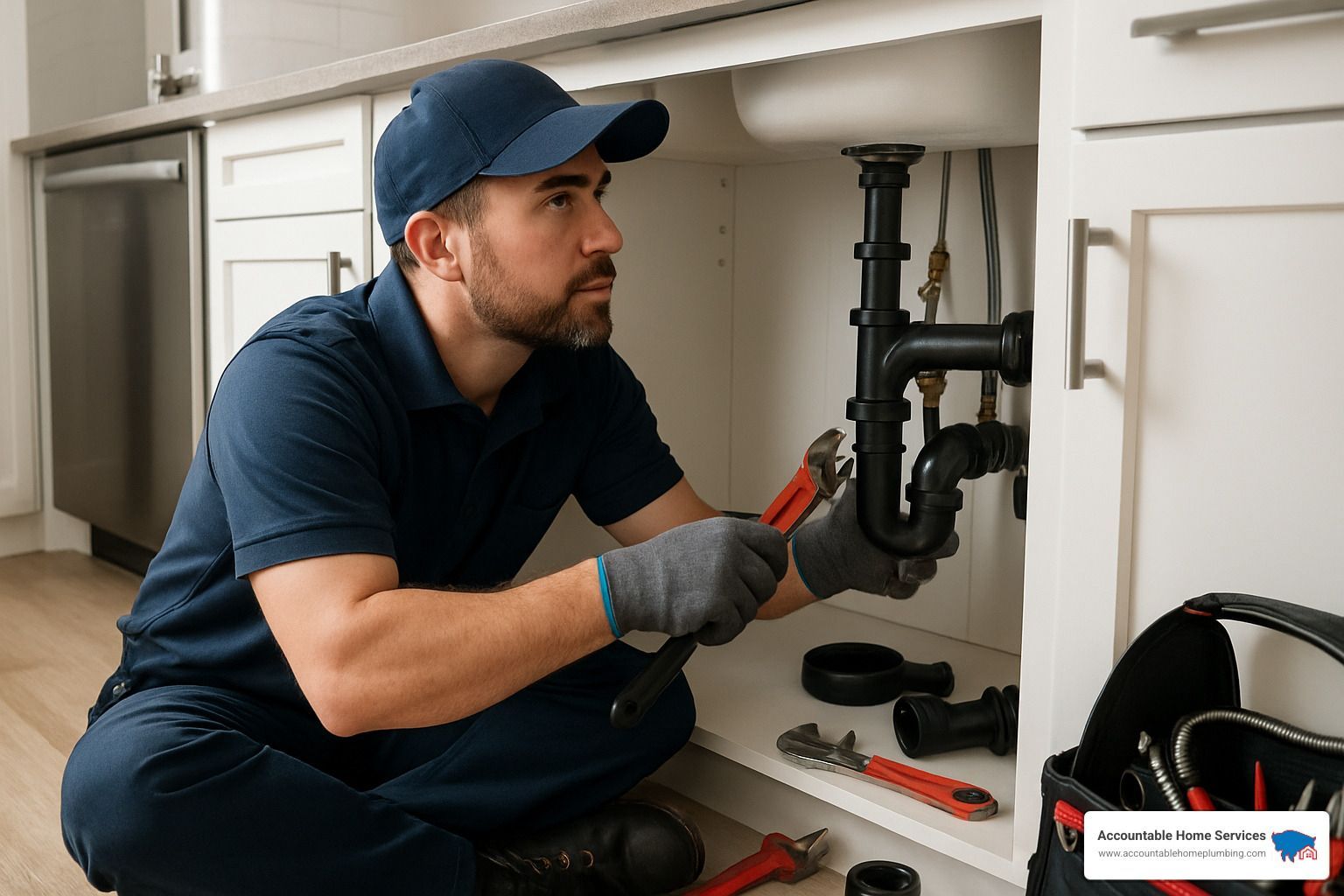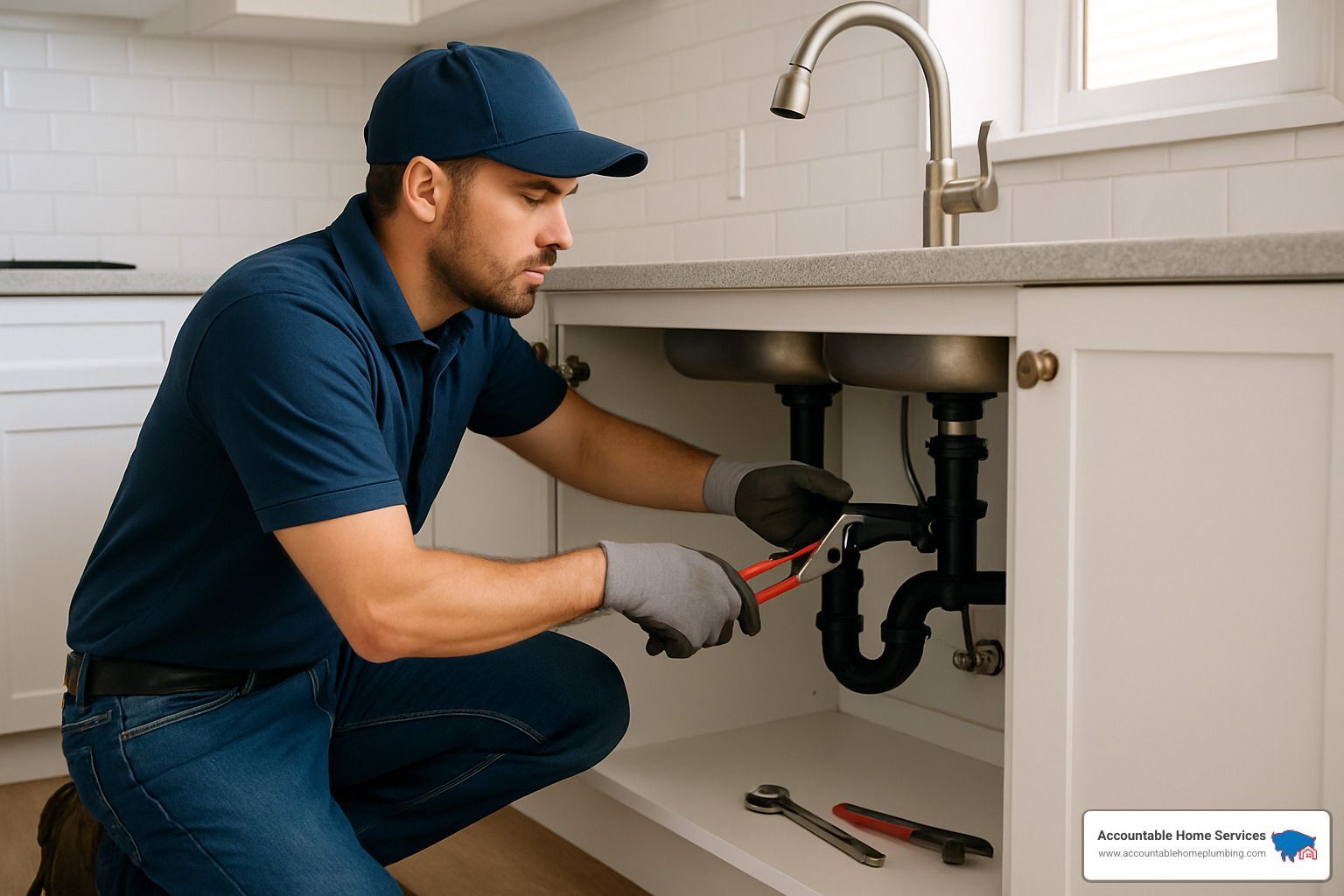From Slow to Go: Best Solutions for Draining Sinks
Having a slow draining sink is one of the most common — and frustrating — plumbing issues homeowners face. When you're rushing to get ready and your sink won't quickly drain, life comes to a grinding halt. Worse yet, these clogs don't just affect your schedule; they can escalate into costly problems like water damage or foul odors if left untreated.
So what's the best solution for slow draining sink? When it comes to a swift and effective fix, simple DIY methods often do the trick:
- Baking Soda and Vinegar: Combine these household staples for a natural chemical reaction that breaks down clogs.
- Boiling Water: Pour it down the sink to loosen up minor buildup from hair or food debris.
- Drain Snake or Zip-It Tool: Perfect for removing hair and debris without taking the sink apart.
But why let it become a headache in the first place? Understanding what causes these clogs — such as hair, soap scum, grease, or even tree roots — can help you act before it results in more serious plumbing issues.
With the right know-how, a slow draining sink becomes less of a problem and more of a quick, DIY fix you can handle yourself. Stick with us as we explore these methods and more to help you take charge of your pipe problems.
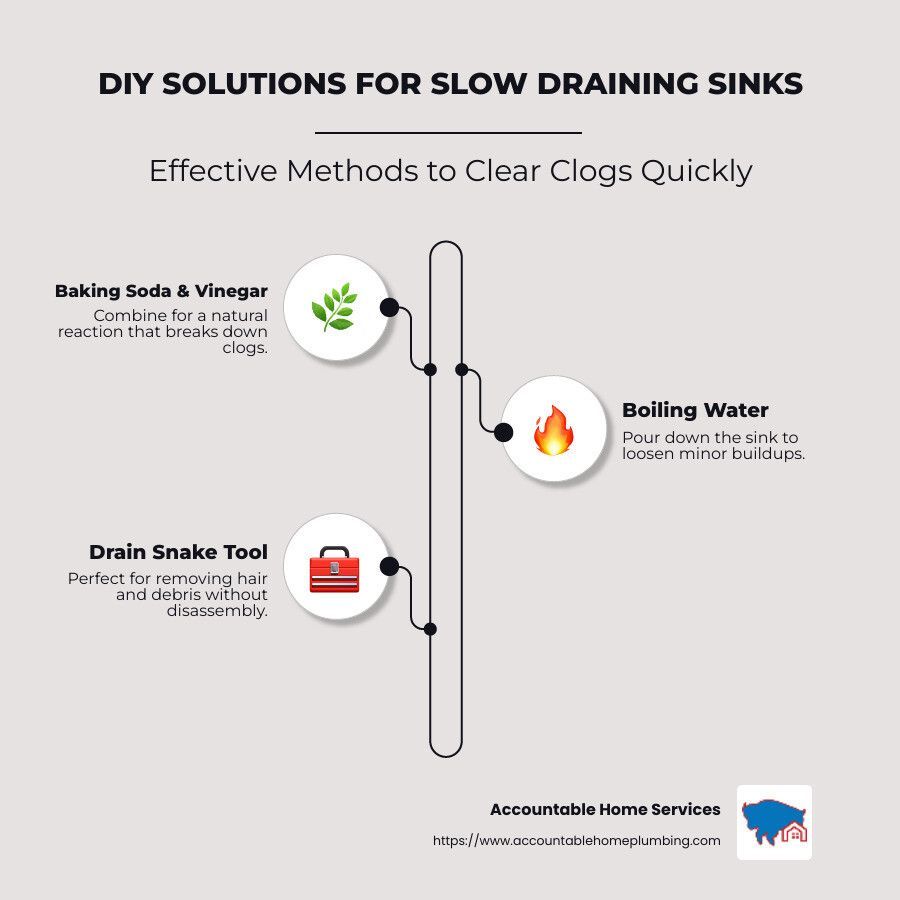
What Causes a Slow-Draining Sink?
Understanding the root causes of a slow-draining sink can be the first step towards finding the best solution for slow draining sink issues. Here’s a breakdown of the common culprits:
Clogs
Clogs are the number one reason for slow-draining sinks. They often result from a buildup of everyday items that go down the drain. These can include soap scum, hair, grease, and food particles. Over time, these materials accumulate and restrict water flow, causing the sink to drain slowly.
Soap Scum
Soap scum is a sneaky offender. It forms when soap mixes with hard water minerals, creating a sticky residue that clings to pipes. This residue can trap other debris, contributing to clogs.
Hair
In bathroom sinks, hair is a frequent problem. It easily gets caught in the drain and combines with soap scum and other particles to form a stubborn blockage.
Grease
In kitchen sinks, grease is a major issue. When hot grease is poured down the drain, it cools and solidifies, sticking to the walls of pipes. This can quickly lead to a significant clog.
Tree Roots
Believe it or not, tree roots can also be a factor. Roots are naturally drawn to water sources, and if there are small cracks in your pipes, they can infiltrate and cause blockages. This is especially common in older plumbing systems.
Mineral Deposits
Lastly, mineral deposits from hard water can build up inside pipes. This narrows the pipe diameter, slowing down water flow and leading to clogs. Regular maintenance can help prevent these problems.

Knowing these causes can help you take preventive measures and choose the right best solution for slow draining sink problems. In the next section, we’ll explore practical DIY methods to tackle these issues head-on.
Best Solution for Slow Draining Sink
When dealing with a slow-draining sink, finding the right solution is key. Here are some tried-and-true methods that can help you tackle this common household problem effectively.
Baking Soda and Vinegar
Baking soda and vinegar are a powerful duo for unclogging drains. Their chemical reaction can break down stubborn clogs caused by soap scum, hair, and grease.
- Pour 1/2 cup of baking soda down the drain.
- Follow it with 1/2 cup of vinegar.
- Cover the drain immediately to improve the foaming action.
- Let it sit for about 30 minutes to an hour.
- Flush the drain with boiling water to clear the debris.
This method is not only effective but also safe for your pipes and the environment.
Boiling Water
Boiling water can be surprisingly effective for minor clogs. It works best on clogs caused by soap scum or small food particles.
- Boil a pot of water.
- Slowly pour the boiling water down the drain in stages, allowing it to work its way through the clog.
Repeat if necessary. This method is simple and often effective, especially for metal pipes.
Commercial Drain Cleaners
Commercial drain cleaners can be a powerful option for more stubborn clogs. They often contain chemicals like sodium hydroxide, which can break down tough blockages.
- Use with caution: Follow the instructions carefully, and ensure the area is well-ventilated.
- Safety first: Wear gloves and goggles to protect yourself from splashes.
While effective, these products can be harsh on pipes and the environment, so they should be used sparingly.
Choosing the Right Method
Choosing the best solution for slow draining sink issues depends on the type of clog and your personal preference. For a natural and eco-friendly approach, baking soda and vinegar are excellent choices. For tougher clogs, boiling water or commercial cleaners may be necessary.
In the next section, we’ll dive into some practical DIY methods to fix a slow-draining sink, ensuring you have all the tools you need to keep your drains flowing smoothly.
DIY Methods to Fix a Slow-Draining Sink
When your sink is sluggish, don't worry—there are simple DIY methods you can tackle before calling in the pros.
Removing the Pop-Up
The pop-up stopper in your sink is a magnet for hair and debris. Over time, it can cause blockages. Here’s how to clean it:
- Remove the pop-up by unscrewing the nut beneath the sink.
- Pull out the stopper and check for hair and gunk.
- Clean it thoroughly with soap and hot water.
- Reinstall the stopper securely.
By keeping the pop-up clean, you can prevent slow drainage and maintain a healthy sink.
Use a Zip-It Tool
A zip-it tool is a lifesaver for removing hair and debris.
- Insert the zip-it tool into the drain.
- Twist and move it around to snag hair and debris.
- Pull out the tool slowly, removing the collected gunk.
- Repeat until the drain is clear.
This tool is affordable and effective, making it a great addition to your household toolkit.
Homemade Drain Cleaner
For a natural approach, a homemade drain cleaner can work wonders.
- Pour 1/2 cup of baking soda into the drain.
- Add 1/2 cup of vinegar and cover the drain to trap the fizz.
- Wait for 30 minutes to let the chemical reaction break down the clog.
- Flush with boiling water to clear the debris.
This method is eco-friendly and gentle on your pipes.
Plunge the Sink
A plunger isn’t just for toilets—it’s great for sinks too!
- Fill the sink with a few inches of water to create a seal.
- Cover the overflow hole with a wet cloth for better suction.
- Plunge vigorously to apply pressure and dislodge the clog.
- Test the drain by running water to see if it's clear.
This technique uses pressure to break up blockages and restore flow.
Clean the P-Trap
If all else fails, cleaning the P-trap might be necessary.
- Place a bucket under the P-trap to catch any water.
- Unscrew the slip nuts and remove the trap.
- Clear out any gunk and rinse the trap with hot water.
- Reassemble the trap and test the sink.
Regular maintenance of the P-trap can prevent future clogs and ensure smooth drainage.
By using these DIY methods, you can tackle slow-draining sinks with confidence and keep your plumbing in top shape. In the next section, we'll explore tips to prevent slow-draining sinks, so you won't have to deal with pesky clogs again.
Tips to Prevent Slow-Draining Sinks
Preventing a slow-draining sink is easier than dealing with a clogged one. Here are some simple preventive measures to keep your sink flowing smoothly:
Regular Cleaning
Routine maintenance is key. Make it a habit to clean your sink and its components regularly:
- Weekly Rinse: Flush your drains with hot water and dish soap once a week. This helps break down any grease or soap scum starting to accumulate.
- Monthly Deep Clean: Use a mixture of baking soda and vinegar followed by hot water monthly to dissolve organic matter and keep pipes clear.
Mindful Disposal
Be cautious about what goes down the drain. Here’s what you should avoid:
- Grease and Oil: Never pour these down the sink. They solidify and cause blockages.
- Food Scraps: Use a sink strainer to catch food particles and dispose of them in the trash.
- Hair and Debris: Install a drain cover to catch hair and other debris before they enter the pipes.
Additional Tips
- Educate Your Household: Make sure everyone knows the importance of proper disposal and cleaning habits.
- Professional Inspections: Schedule routine checks by a professional plumber to spot potential issues early.
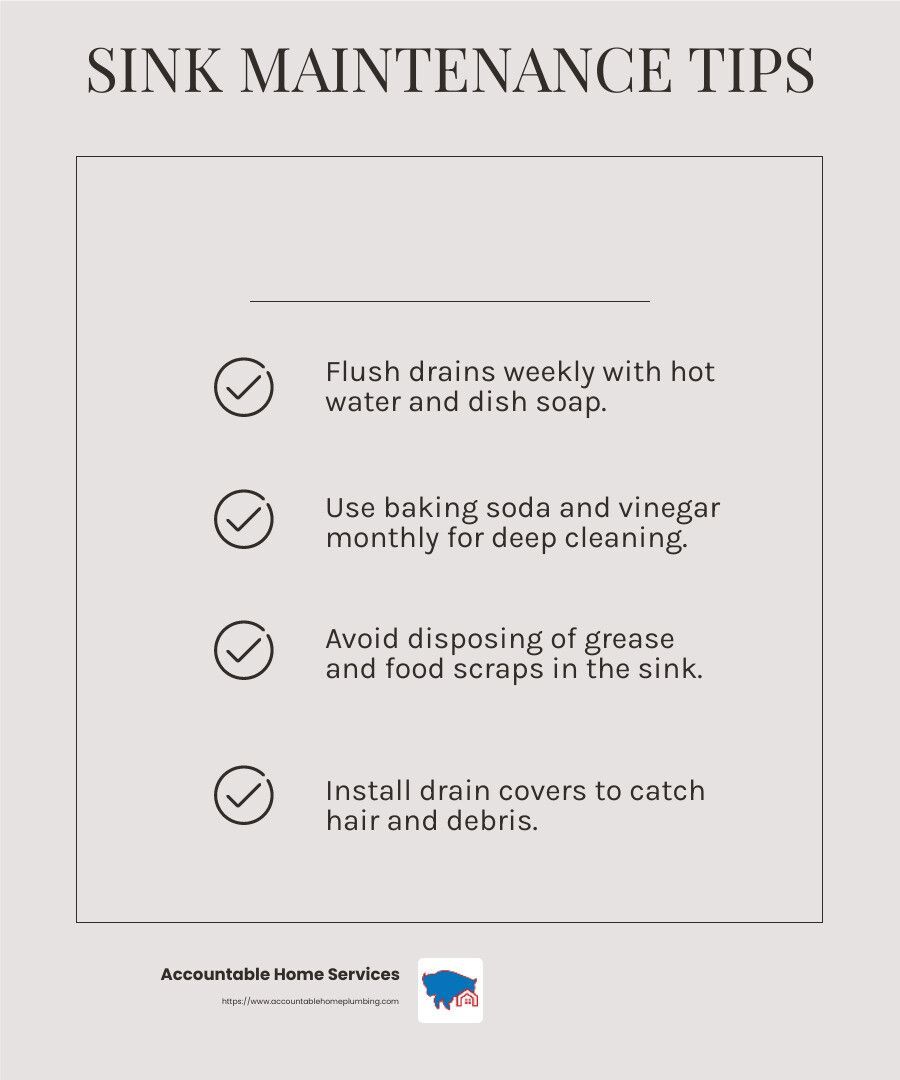
By following these tips, you can significantly reduce the chances of dealing with a slow-draining sink. Next, we'll address some frequently asked questions about slow-draining sinks to provide more insights into maintaining a healthy drainage system.
Frequently Asked Questions about Slow Draining Sinks
How to Clear a Slow Bathroom Sink Drain?
Clearing a slow bathroom sink drain can often be tackled with simple household items. Start by using baking soda and vinegar. This duo creates a fizzy reaction that breaks down clogs. Here's how:
- Pour 1/2 cup of baking soda down the drain.
- Follow with 1/2 cup of vinegar. Let it fizz for about 15 minutes.
- Flush with hot water to clear out the loosened debris.
This method works well for minor clogs caused by soap scum and hair.
What is the Best Solution for a Slow Draining Kitchen Sink?
Kitchen sinks often slow down due to grease buildup. The best solution for a slow draining kitchen sink involves tackling this grease:
- Boil a pot of water and pour it down the drain. This helps melt the grease.
- Use a commercial drain cleaner specifically designed for kitchen sinks to break down stubborn grease deposits. Always follow the manufacturer's instructions for safety.
For persistent issues, consider using a drain snake to physically remove tough clogs.
How to Maintain a Healthy Drainage System?
Maintaining a healthy drainage system is crucial for preventing slow drains. Here are some tips:
- Routine Checks: Regularly inspect your drains for signs of slow movement or unusual odors. Catching issues early can prevent major clogs.
- Professional Inspection: Schedule an annual plumbing check-up with a professional. This can help identify potential problems, like tree root intrusion or pipe misalignment, before they become serious.
- Mindful Usage: Avoid pouring grease, oil, or coffee grounds down the sink. Use strainers to catch hair and food particles.
By incorporating these practices into your routine, you can keep your drains clear and your plumbing system running smoothly.
Next, we'll conclude with how Accountable Home Services can assist you with expert plumbing solutions.
Conclusion
When it comes to tackling slow-draining sinks, Accountable Home Services is your go-to expert for reliable plumbing solutions. With our experience in the Denver Metro area, we specialize in addressing all your plumbing needs, from emergency repairs to routine maintenance.
Our team is dedicated to providing transparent and upfront pricing, ensuring you know exactly what to expect without any hidden fees. We believe in delivering high-quality service with integrity, so you can trust us to handle your plumbing issues efficiently and affordably.
Whether you're dealing with a stubborn clog or need help maintaining a healthy drainage system, our professionals are equipped with the latest tools and techniques to get the job done right. From using advanced equipment for drain cleaning to offering expert advice on preventing future clogs, we're here to help keep your plumbing system in top shape.
For more information on how we can assist you with your slow-draining sink issues, visit our drain cleaning service page to learn more about our comprehensive services. Let us be your partner in maintaining a smooth and efficient plumbing system.

